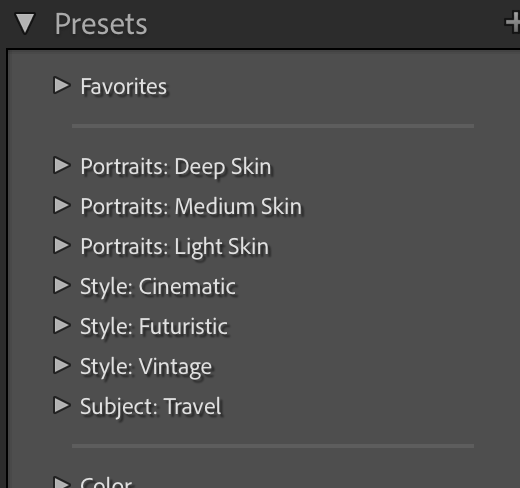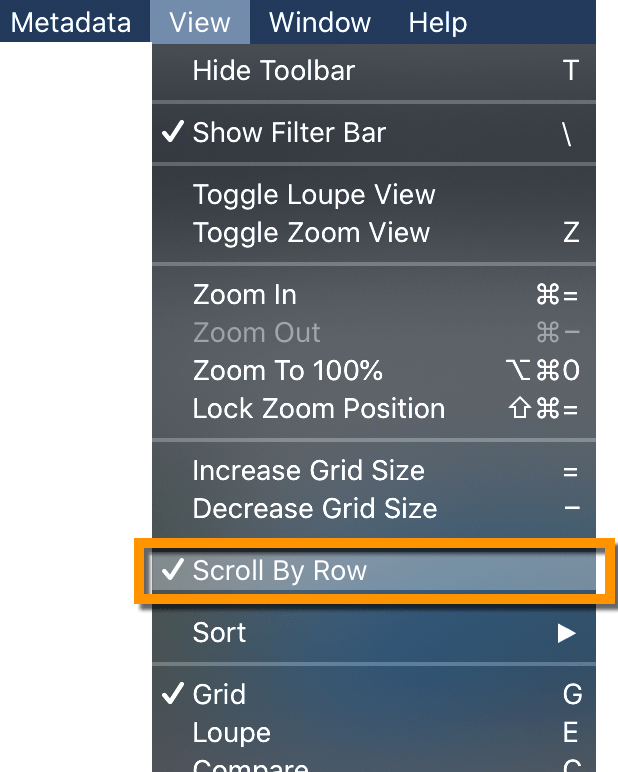 Adobe has released Lightroom Classic 10.3. This update contains a few new features, including Super Resolution for increasing the dimensions of your images, native M1 support for Macs, performance improvements and more. It also contains support for new cameras, new lens profiles and bug fixes. Read more about these new features below.
Adobe has released Lightroom Classic 10.3. This update contains a few new features, including Super Resolution for increasing the dimensions of your images, native M1 support for Macs, performance improvements and more. It also contains support for new cameras, new lens profiles and bug fixes. Read more about these new features below.
Updates are also out for the cloud-based Lightroom Desktop and for Lightroom Mobile – read about these in my separate blog post.
 Owners of my latest Lightroom 5, 6 and Classic: The Fundamentals & Beyond video series (within your initial period of free updates or having renewed): The video series is up-to-date with all new features and changes. Access updates in the Members area.
Owners of my latest Lightroom 5, 6 and Classic: The Fundamentals & Beyond video series (within your initial period of free updates or having renewed): The video series is up-to-date with all new features and changes. Access updates in the Members area.
 Owners of my Lightroom 5, 6, and Classic: Producing Great Output video series: This series has also been updated, given that the new Super Resolution feature has implications for how large you can print or otherwise create output with an image. Access updates in the Members area.
Owners of my Lightroom 5, 6, and Classic: Producing Great Output video series: This series has also been updated, given that the new Super Resolution feature has implications for how large you can print or otherwise create output with an image. Access updates in the Members area.
Not yet an owner of these Fundamentals & Beyond and Producing Great Output video series? Whether you’re a beginner or experienced learner, you’ll be amazed at how much you learn in 41+ hours of training. Try them risk free with my 60-day 100% satisfaction guarantee!
Not sure if the version you purchased is eligible for updates? Contact us and we’ll check for you!
In This Article:
- When and How to Update
- New Cameras Now Supported
- New Lens Profiles
- Mac M1 Support
- Super Resolution
- Presets
- Scroll by Row
- Performance Improvements
- Tethering
- Fixed Bugs
- Related Content
(The above links to sections below may or may not work depending on what device and system you are using. If they don’t work, scroll down.)
When and How to Update
When to Update:
I don’t have any indication that things won’t go smoothly with these small updates. That said, if you’re not urgently in need of the latest bug fixes or features, it couldn’t hurt to wait a week or two to see if others experience issues, unless you need to update urgently to hopefully resolve bugs introduced in the last release(s). If you install the update and then encounter bugs that you can’t live with, you can use the Creative Cloud app to revert to the previous version.
If I hear of serious widespread issues with these releases I will post them here in this section – please check here rather than emailing me.
That said, I don’t plan to report on all bugs, so click here to check for bug reports and to report bugs or issues that you encounter.
New Cameras Now Supported
Lightroom Classic and the entire Lightroom ecosystem now support the following new cameras:
- DJI AIR 2S
- DJI Mini 2
- Pentax K-3 Mark III
- Sony A7R IIIA (ILCE-7RM3A)
- Sony A7R IVA (ILCE-7RM4A)
- Sony FX3 (ILME-FX3) (final support)
- Sony Xperia 1 Wide-angle Camera
- Sony Xperia 1 II Telephoto Camera
- Sony Xperia 1 II Ultra wide-angle Camera
- Sony Xperia 1 II Wide-angle Camera
- Sony Xperia 5 Wide-angle Camera
- Sony Xperia 5 II Telephoto Camera
- Sony Xperia 5 II Ultra wide-angle Camera
- Sony Xperia 5 II Wide-angle Camera
Click here for a list of all cameras supported by each version of Lightroom (and Camera Raw).
New Lens Profiles
These new lens profiles are available in Lightroom Classic and throughout the Lightroom ecosystem:
Mac M1 Support
Lightroom Classic is now an M1-native application – running it in Rosetta emulation mode is no longer necessary except when you are using tethered capture. If/when you launch tethered capture, you will be prompted to relaunch the app in Rosetta mode.
Super Resolution
 For complete lessons on Enhance, including both Raw Details (AKA Enhance Details) and Super Resolution, watch my video tutorials on Enhance in either of my Lightroom 5, 6 and Classic: The Fundamentals & Beyond or Lightroom 5, 6 and Classic: Producing Great Output video series. Quality comparisons and bonus tips included!
For complete lessons on Enhance, including both Raw Details (AKA Enhance Details) and Super Resolution, watch my video tutorials on Enhance in either of my Lightroom 5, 6 and Classic: The Fundamentals & Beyond or Lightroom 5, 6 and Classic: Producing Great Output video series. Quality comparisons and bonus tips included!
The new Super Resolution feature uses artificial intelligence to increase the size of your image to four times its original size in pixels. (It doubles the length and the width.) This can be useful for making large prints or for upsizing a small crop of an image. Super Resolution will work on any file type (raw, JPEG, TIFF, etc.).
Raw Details (previously known as Enhance Details) and Super Resolution are now in one Enhance dialog. Right-click in your image and choose Enhance…

Raw Details must be run with Super Resolution if your image is a camera-proprietary raw file (not a DNG, JPEG, TIFF, etc.).
Lightroom can’t handle photos over 65,000 pixels or 512 MP, so Super Resolution won’t work on files large enough that the 4x increase would put them over the limit.
The quality of enlargement compared to upsizing during export and print, but be careful – Super Resolution can introduce color artifacts and noise. Evaluate your image closely (zoomed in to 100%) after running the process. For best results, use raw files, since any artifacts in other file types will be enlarged. That said, I wouldn’t hesitate to use this on other file types – I’d just check the result carefully.
In this article, Eric Chan of Adobe discusses Super Resolution and how it was developed.
Presets
Premium Portrait and Style Presets
There are seven new premium preset sets available in Lightroom Classic and the entire Lightroom ecosystem. Adobe hired photo editing and preset-creation experts to create them, and they are very good. The first three, Portraits, are categorized by skin type – Deep, Medium, and Light. The other four, Style, include Cinematic, Futuristic, Vintage, and Travel preset sets.


 For a complete lesson on presets, watch my Develop Presets tutorial in my Lightroom 5, 6 and Classic: The Fundamentals & Beyond series.
For a complete lesson on presets, watch my Develop Presets tutorial in my Lightroom 5, 6 and Classic: The Fundamentals & Beyond series.
Process Version Check Box in Create Preset and Other Dialogs
In the Create Preset dialog, there will no longer be a warning when Process Version is unchecked. Process Version will be automatically selected when Basic tone controls and/or Treatment & Profile are checked (and it can not be deselected). This change also is present in the Sync and Copy/Paste dialogs.
Preset File Structure
Preset files will now be stored on your hard drive in a flat file structure rather than in subfolders corresponding to preset groups. This change will not affect the structure of previously stored presets.
Preset locations:
- Mac: <username>/Library/Application Support/Adobe/CameraRaw/Settings
- Windows: <username>\Appdata\Roaming\Adobe\CameraRaw\Settings
When exporting presets to share with others, Adobe recommends using the preset export option rather than accessing presets directly from Explorer/Finder.
Scroll by Row
In Grid view, the default smooth scrolling can often cut off a portion of the top and/or bottom row of images. Now with the Scroll by Row option provides an alternative that doesn’t. To enable, in Grid view go to View>Scroll by Row. Do the same again to return to the default behavior

Performance Improvements
Performance has been improved in the following areas:
- When editing metadata of multiple images at once, time to update the data in the Metadata panel
- Tone Curve on Mac when using custom color profiles
In response to Develop slowness reported with 10.2, work has also been done to optimize the utilization of VRAM. Expect more improvement with higher VRAM. VRAM of 4 GB and lower will likely not see an improvement in performance. (VRAM is memory on your graphics/video card used to store image data for display.)
Tethering
 For a complete lesson on shooting while tethered to Lightroom, including using Live view, watch the Shooting While Tethered video in my Lightroom 5, 6 and Classic: The Fundamentals & Beyond series.
For a complete lesson on shooting while tethered to Lightroom, including using Live view, watch the Shooting While Tethered video in my Lightroom 5, 6 and Classic: The Fundamentals & Beyond series.
Macs with M1 Chips
Tethered capture will only work in Rosetta emulation mode. When you launch tethered capture, you will be prompted to relaunch the app in Rosetta mode.
Tether Support
No new cameras have been added to the list this time of those that support tethered capture.
Click here to see a list of all cameras supported for tethered capture.
Tethered capture involves shooting with your camera plugged into your computer, with Lightroom automatically and instantly importing the images. Watch my video tutorial on shooting tethered with Lightroom for more details.
Tether Live View for Nikon Cameras
With LRC 10.2 in February, a beta version of Nikon Live View was released. With 10.3, the official version has been released, for a subset of Nikon cameras. The list of live-tether-supported cameras at the bottom of this tethered capture support page will be kept up-to-date as new cameras are added .

Fixed Bugs
Customer-reported bugs that have been fixed are listed below. Adobe only reports on customer-reported ones, but many other bugs have also been fixed, so if you don’t see a bug that has been affecting you below, do check to see if the troubled function works now.
- Support Hasselblad X1D crop modes
- Nikon Z50 As Shot WB has magenta cast
- Color Label in Grid Toolbar is sometimes inconsistent with label status of image
- Tether doesn’t work for Canon cameras on MacOS 10.15
- Unexpected error while opening the catalog
- Incorrect display of Crop Lock Icon
- Converting raw DNG to Lossy does not honor Extension Case Setting
- Color Grading Option (Preset Creation – ISO Adaptive Preset)
- BigSur | Keyword list is not aligned properly
- Library Loupe – Wacom right-click contextual menu is incorrect.
- Context Selection in Grid View Expanded Cells does not apply
- LR Classic crashes in Slideshow on adding audio
- Nikon tether: Memory Leak in Nikon Live view
- Paste With Previous incorrectly crops image
- Folder rename after import causes Classic to lose photos until restart
- Export to Apple Mail Fails

